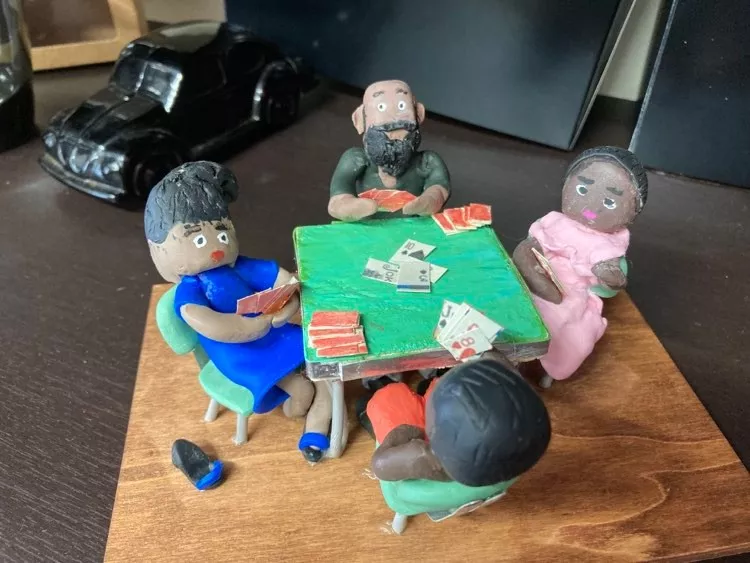Support Local Artists at Charlie's Place in Downtown Myrtle Beach

Support Local Artists at Charlie's Place in Downtown Myrtle Beach
Shelia Thomas comes from a long line of entrepreneurs in the Myrtle Beach area, as her family has owned various businesses in downtown Myrtle Beach for years.From barber shops to restaurants, Shelia and her family know how to run it all – and how to make sure each customer feels welcomed at the door.
We visited Shelia’s booth at Charlie’s Place, an historic African American night club and pillar of the community, that she manages with her sister. S & N or “Sisters and Nieces” sells handmade clay figurines and everyday scenescapes of local life in the African American community. From a little girl eating watermelon to couples dancing to a record player, each piece has intricate details that point to the time and care all the figurines are made with and celebrate a part of Myrtle Beach history and present culture.



Shelia and her sister open their booth on Tuesdays to sell their creations to visitors on the Myrtle Beach History, Movies & Music Trolley Tour and locals who stop by. We talked to Shelia for quite a while, listening to all her wonderful stories about the history of Myrtle Beach and her love for the town where she grew up. Shelia told us stories about her father, who was a barber for many of the musicians staying at Charlie’s Place, but she was too young to visit Charlie’s Place during its hay-day. Now, Shelia and her sister have come full circle – owning and operating their pop-up business that sells beautiful local goods in a place that holds a significant piece of history in the Grand Strand.
Charlie’s Place was a night club owned by Charlie Fitzgerald and his wife, Sarah. Famous musicians such as Dizzy Gillespie, Little Richard, and Billie Holiday performed their music at Charlie’s place, and stayed in the adjacent Fitzgerald Hotel, also owned by Charlie and Sarah from the late 1930s to the early 1960s. The Fitzgerald’s home has been refurbished to become an event and community center, and several of the motel rooms have been reconstructed to show visitors the history of travel during segregation.

